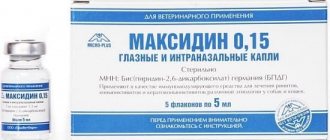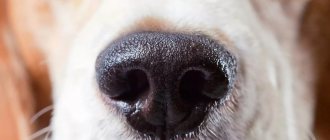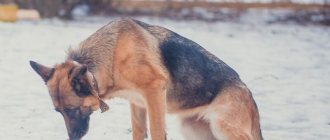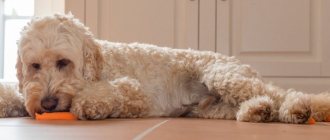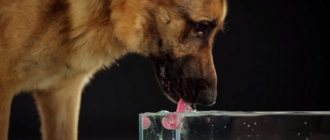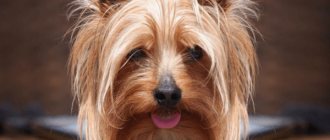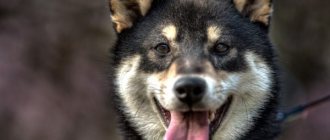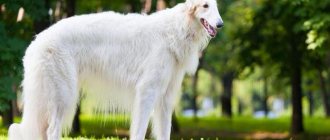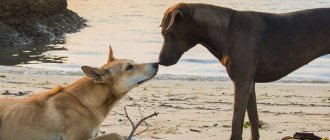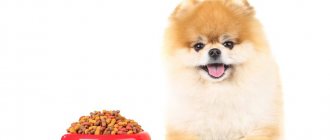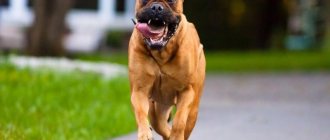Even with careful care, a dog can get sick. The pet's body is incredibly sensitive - it is susceptible to colds, which are accompanied by unpleasant symptoms. A runny nose is one of them. A stuffy nose blocks normal respiratory function, causes swelling and pain, and causes considerable discomfort to the animal. Snot can also indicate the presence of serious pathologies, so at the first suspicion you need to pay a visit to the veterinary clinic, where the doctor will make the correct diagnosis, find the root cause of the problem and suggest effective comprehensive solutions. The doctor will professionally perform an examination, prescribe the necessary tests and individually develop a treatment plan.
What breeds are at risk?
All four-legged friends with weakened immune systems have no protection against a runny nose, and periodically get sick. Cases of illnesses become more frequent in the off-season, when the weather outside is damp with piercing winds and precipitation. Small decorative dogs react sharply to climate change, while large guard and hunting dogs, which are naturally strong and hardy, tolerate walks through puddles normally.
However, representatives of some breeds are at a special risk group - these are pugs, French bulldogs, sharpeis and other pets with a flattened muzzle. This characteristic anatomical feature makes the nose vulnerable. Through short respiratory tracts, pathogenic infections easily enter the body and cause snot. To help your dog, you need to choose the right medications in a veterinary pharmacy and use safe traditional methods of treatment that are approved by a veterinarian.
Allergic rhinotracheitis
The allergic form of the disease in dogs is diagnosed less frequently. Such an individual reaction can be observed during seasons of abundant flowering of flora. Allergens can also be car exhaust fumes, household chemicals, perfume, and cigarette smoke.
In rare cases, four-legged pets experience a negative reaction to certain medications, drugs intended to combat fleas, and shampoos. When diagnosing this form of rhinotracheitis, the type of allergen is identified, from which the dog must be protected.
When helminths actively multiply, some of them penetrate into the blood and are delivered to the lungs and respiratory tract. The result of their activity in the respiratory system is the appearance of an inflammatory focus and cough. Worm larvae accumulate in mucus. The dog swallows it, the parasites go to the stomach and pass into the adult stage in the digestive system.
Key causes of the disease
As the practice of specialized specialists involved in restoring the health of pets shows, snot in dogs occurs for a variety of reasons, which can be divided into four groups. Among them:
1. Hypothermia
Hypothermia is a huge stress for the body. In severe frosts, street dogs suffer from this factor; their owners keep them in open enclosures or kennels without insulation. The following situations have a similar effect:
- bathing without subsequent drying
- prolonged exposure to drafts
- walking in the rain
In addition to nasal congestion, hypothermia also causes other symptoms - increased body temperature, fever, lethargy.
2. Entry of a foreign body into the respiratory tract, the appearance of benign and malignant neoplasms in the nose
Sometimes clear discharge is disturbing due to the entry of foreign objects into the nasal sinuses, the appearance of tumors and other neoplasms.
3. Allergic reactions
If a runny nose goes away with frequent sneezing, coughing, swollen nasopharynx and tearfulness, your veterinarian will suspect an allergic reaction. It can occur in both puppies and adults after changing food, vaccinations, or using inappropriate shampoos for the coat.
4. Infections
When pathogenic microorganisms that have entered the nasal mucosa multiply, a puppy or adult dog begins to have clear snot. If therapy is not promptly started, bacteria and viruses continue to infect the body, the runny nose worsens, the discharge becomes thick and acquires a yellow-green tint.
It is also worth considering indirect causes - parasitic infestations, eye diseases, deviations in the normal functioning of the heart and kidneys. They do not directly cause a runny nose, but they have a strong impact on the animal’s immune system, making it weakened and vulnerable.
Symptoms of sinusitis in dogs and other diseases
An irritating agent (microorganisms, poisons, foreign body, allergen) causes swelling of the mucous membrane of the nasal passages. The mucus produced by epithelial cells leads to a narrowing of the lumen of the maxillary sinuses, which is accompanied by inflammation and pain. An owner can suspect his four-legged friend has sinusitis if he knows the symptoms of the disease:
- At the beginning of the development of the disease, clear discharge from the nasal cavity is noted. As inflammation develops, their color changes to white, then the exudate becomes purulent (yellow-green or creamy). It is often possible to observe blood impurities due to fragility of blood vessels.
- The animal often licks off secretions with its tongue, sneezes, and rubs its nose with its paws. Dried crusts are observed on the nasal planum, and in some cases the nasal mucosa becomes ulcerated.
- Due to nasal congestion, the pet cannot breathe freely. Inhalation and exhalation is done through an open mouth. Breathing is noisy.
- Lethargic state, the dog sleeps a lot, is reluctant to go for walks, refuses active games.
- During sleep, snoring and noisy breathing are observed due to swelling of the nasal sinuses.
- The accumulation of pus in the maxillary sinuses causes severe pain in the pet, which is manifested by a cautious gait. The dog avoids sudden movements and may whine in pain when sneezing.
- Submandibular lymph nodes often enlarge to the size of a chicken egg. Lymphadenitis develops as a result of infection entering the lymphatic system.
- In severe cases of sinusitis, the animal has head asymmetry. The owner can observe unilateral drooping of the cheek, ear, and eye.
- In some cases, conjunctivitis is possible.
A sick pet loses its appetite. With sinusitis due to the inflammatory process, an increase in body temperature to 40 - 41C is observed.
What signs deserve attention?
Caring owners are attentive to the first warning signs that indicate a problem. Among them:
- strange discharge that differs in consistency, color, intensity
- sneezing
- snoring during sleep
- loss of smell
- the appearance of crusts on the edge of the nose
- difficulty breathing, congestion
Because of snot, animals lose their vigor and activity and become apathetic. Sometimes cases of refusal to eat are recorded, which leads to exhaustion and weakness of the beloved pet. Therefore, it is extremely important to promptly identify the listed symptoms and take immediate measures to treat the dog. Especially if nasal discharge is accompanied by blood or pus. This indicates that the dog has an advanced cold or a severe form of damage to the mucous membrane of the sinuses, and there is no point in delaying a visit to the veterinarian.
The main factors provoking the development of the disease
Knowing the reasons why rhinotracheitis appears allows you to reduce the risk of the disease and helps you choose the right treatment. The main factors that provoke the disease are viral infections and colds caused by hypothermia. The risk group for rhinotracheitis includes dogs with short hair and representatives of small breeds.
After being exposed to cold or draft for a long time, your pet may develop symptoms of this disease. The viral infection is not transmitted from humans to dogs, but he can contract it from other dogs. Its carriers are pathogenic bacteria. Another reason for the formation of an inflammatory focus is the penetration of a foreign body into the respiratory system.
How to relieve the condition at home?
The good news for dog breeders is the fact that with a runny nose, hospitalization for a pet is required in extremely rare, critical situations. You can alleviate the condition and restore your dog’s health at home.
The owner’s primary task is to establish the true cause of the disease. The dog's nose should be carefully examined using a flashlight to ensure that there are no foreign objects in the passages. It is necessary to note all kinds of injuries, damage, scratches. If a foreign body is found, you should try to remove it yourself, or ask a veterinarian about it.
When it comes to a runny nose that appears after a walk in the rain, we can conclude that rhinitis is of a cold nature. Rarely, but it occurs, allergic rhinitis. With various allergic reactions, the dog swells and loses vital energy.
Tests and research in the veterinary clinic
All detected symptoms must be listed to the doctor. This is necessary to collect anamnesis and determine research. Depending on the situation, making a diagnosis may require:
- urine and blood tests that help detect the cause of the disease based on deviations in basic indicators;
- Ultrasound, X-ray and MRI, which determine the presence of tumors, foreign bodies and injuries;
- cytology of swabs from the nose and mouth, identifying the causative agent of infection;
- rhinoscopy, assessing the condition of the sinuses and nasopharynx.
After receiving all the results, an individual treatment plan is selected for the four-legged patient. Until this point, it is better to avoid taking medications, heating and other manipulations with a sore nose. Without knowing the cause, you will only worsen the dog's condition and slow down its recovery.
Application of drops: result
If the infection contributes to the development of rhinitis, special drops are prescribed. Before using them, the pet’s nasal sinuses are washed with saline so that the active substance penetrates the site of inflammation faster and easier.
Such drugs as Anandin, Maxidin, Pinosol work well. They are instilled into the dog’s nose according to the doctor’s instructions and instructions, which specify the frequency and duration of treatment, as well as the safe dosage.
If the disease has become chronic, use Thymogen drops. They are combined with other drugs in situations where an animal’s runny nose goes away with elevated body temperature and other complications.
The dog often (constantly) sneezes - what is the reason?
Why a dog sneezes a lot and often is a complex question. Sometimes the “foreign object” is a cancerous tumor or benign polyps. In this case, removal of damaged tissue, chemotherapy and recovery are required. Without rhinoscopy and tests, it is impossible to identify the cause of regular sneezing.
Chronic runny nose can cause systematic hypothermia. For example, if the dog is kept in a kennel or enclosure and does not have warm bedding or heating.
Sometimes sneezing is a breed trait. Yorkshire terriers, for example, can sneeze “in the nose,” that is, in the opposite direction. Other dogs with a short, straight muzzle are also prone to this reflex.
How does warming work?
If a veterinary medicine specialist has diagnosed rhinitis, the course of treatment may include warming. The procedure is simple, accessible and safe. The main thing is to win over the pet and establish a trusting relationship with it during the manipulation process. You need to stroke the dog, calm it down, and try to cause it a minimum of discomfort.
The warming up steps are as follows:
1. Preparation
Heat salt or sand in a hot frying pan, then pour it into a thick bag made of thick fabric.
2. Applying dry heat
A bag is applied to the problem area, trying to make every movement light and unobtrusive. The procedure should not be accompanied by pain or burns, so it is extremely important to make sure that the sand or salt is not too hot.
3. Lotions
When the manipulations are completed, lotions will help consolidate the result, and the animal will recover faster. Gauze soaked in a warm solution of hydrogen peroxide is applied for 10-15 minutes. During this time, the lotion will dry naturally.
Prescription of treatment according to the identified disease
The main goal of treatment is to eliminate the underlying disease. For this purpose, medicinal and surgical methods are used. In the first case, they limit themselves to taking medications, and in the second, they resort to surgical intervention.
Surgery under general anesthesia is indicated for the presence of tumors and injuries to the nasal septum. Anesthesia is also used when treating teeth and removing a deeply embedded foreign object. In all other cases, for recovery it is enough to take a course of medications, combining their use with physiotherapy and skincare procedures.
Taking medications: tablets, drops, ointments
Depending on the pathogen found, the four-legged patient is prescribed antibiotics, antiviral or antifungal tablets and drops. The dosage and duration of drug therapy is determined individually, so simply follow the recommendations of your doctor.
Additional drugs include:
- antihistamines and glucocorticosteroids that suppress allergic reactions;
- immunomodulators that restore the body's defenses;
- analgesics, anti-inflammatory and hemostatic, helping to cope with the symptoms that arise;
- infusion solutions that stimulate the removal of harmful toxins.
It is also mandatory to prescribe ointments for treating the sinuses. They neutralize the pathogen, relieve inflammation and accelerate the regeneration of damaged tissues.
Warming, rinsing, inhalation
The outflow of purulent exudate is stimulated by the Sollux infrared lamp. When exposed to heat, blood vessels dilate, restoring blood circulation. Compresses with heated salt create a similar effect. Please note that this procedure is contraindicated in case of high fever and bleeding. Before carrying out this procedure, it is necessary to obtain appropriate permission from a veterinarian.
Drying crusts of pus are soaked with chlorhexidine, miramistin or other antiseptics without alcohol. Herbal infusions of sage or calendula also cope with this task. After removing the crusts, the nasal passages are washed with a syringe, using medications prescribed by the doctor.
For breathing problems, steam inhalation is recommended. A steam-filled bathroom or a special inhaler with a small amount of heated water with essential oils (mint, eucalyptus, tea tree) is suitable for this.
Hygiene and care
During treatment, the patient is isolated in a separate room to avoid infecting other pets. The chosen place is insulated and protected from drafts, and all ventilation is provided during walks or feeding. Please note that the duration of walking will have to be reduced, and physical activity will have to be completely eliminated.
All food served must be easily digestible. It is recommended to warm it to room temperature. Particular attention should be paid to drinking. In addition to plain water, you can include rosehip decoctions in your diet, which strengthen the immune system.
Preventive measures to prevent problems
Regular preventive measures will be the most reliable method of preventing a runny nose. Following these guidelines will help ensure your dog is properly protected:
- Buying clothes
Owners of decorative breeds should consider a winter wardrobe for their pet. Clothing will prevent hypothermia and make walking in inclement weather safe.
- Choosing the right place in the house
The dog should not be exposed to drafts. The place for her to sleep and rest should be arranged away from drafty window openings and entrance doors.
- Fencing against stray animals
To minimize the risk of contracting an infection, you need to strictly control the walking process and avoid physical contact with stray animals.
Prevention should also include annual scheduled examinations with a doctor at the veterinary clinic, and a visual examination of the sinuses at home once a week. If the measures taken do not produce results and the disease sets in, you need to seek help from specialists.
Sneezes and coughs
Sneezing and coughing attacks in dogs look frightening, as if the animal is choking, convulsively gasping for air, and jerking its head. For an unprepared owner, such a picture will cause horror and panic, but there is no need to worry. Most likely, the pet has caught a cold.
His only symptom may be occasional sneezing or frequent coughing. But sometimes the disease takes on a different form:
- Heat;
- Chills;
- Lack of appetite;
- Lethargy.
In this case, the owner can independently cope with the problem:
- With children's "Pinosol", drop 1-2 drops into each nostril 3 times a day.
- When crusts appear, hydrogen peroxide diluted with water is dripped (1-2 drops each).
- Cough is treated with Pertussin children's syrup (no more than 1-2 teaspoons per day), Glyceram or Mucaltin.
If the cold is caused by hypothermia, then you need to take care of the warmth of the room in which the pet is located. It is better to put the heating pad in the sunbed for a while. From now on, you need to dress your dog in protective warm overalls and boots. There should be no drafts or temperature changes in the house due to air conditioning.
Bloody nasal discharge
Often, bloody discharge from the nose is a consequence of advanced cases of rhinitis or injury. For natural reasons, nosebleeds never flow.
Causes
These may appear in the following cases:
- Injuries (including blows to the nose).
- Foreign bodies and parasites.
- Oncology.
- Arterial hypertension (in other words, high blood pressure).
Treatment methods
In these cases the following is shown:
- For minor injuries, vasoconstrictors are prescribed. In severe cases - surgery.
- Surgeries are also used in cases of tumors and in the presence of deep-seated foreign bodies.
- For high blood pressure, various beta-blowers are prescribed, but only after consultation with a veterinarian!
Cold drops for dogs
During the off-season, in rainy weather, when there are puddles on the street, small dogs very often suffer from a runny nose. You need to take care of them, try not to walk for a long time on a rainy day so that the fur does not get wet. Oddly enough, hunting and watchdogs rarely get sick even during severe frosts and rainy autumn days. This is due precisely to the stability of the breed and genetic endurance. After all, such breeds were created in order to protect, protect and help a person. Decorative dogs are created to delight owners, playing the role of a living toy.
Cold drops for dogs, review:
- Argumistin. This is a combination drug that contains an antibiotic. It is used not only to treat a runny nose, but also to treat the ears and eyes. It is prescribed not only for bacterial lesions of the nasal passages, but also for viral infections, as well as diseases of mixed etiology. The drug contains colloidal silver, as well as Miramistin.
- Anandin. These are drops that improve immunity in the nasal passages. Therefore, it is effective against both viral and bacterial infections. Helps animals even if a runny nose occurs after hypothermia. This drug relieves symptoms and also stimulates the body to fight infection.
- Desacid Forte . This is a drug that contains several components at once. In the composition you can find an antibiotic, succinic acid. Chloramphenicol disrupts protein synthesis in microbial cells, thereby preventing their growth and reproduction. Succinic acid is a stimulating component that eliminates inflammation, improves metabolism between cells, thereby accelerating the effect of drugs.
The pet is sick
Purulent discharge
Unlike the two cases described above, the appearance of pus can never be explained by natural causes. If a dog has such discharge from his nose, there is definitely something wrong with his health.
Causes of purulent discharge
The reasons may be as follows:
- Infectious diseases of bacterial and viral etiology.
- Advanced cases of chronic allergies.
- Foreign bodies or parasites in the nasal passages.
- Oncological diseases. In the later stages, the tumors begin to collapse, which may be accompanied, among other things, by the release of pus.
- Diseases of fungal origin should be highlighted as a separate item. In advanced cases of fungal pathologies, abundant purulent discharge is released from the dog’s nose, in which it is easy to notice whitish lumps (clusters of fungal spores).
Treatment methods
As in all previous cases, the treatment method depends on the specific root cause that caused the development of purulent inflammation:
- Powerful broad-spectrum antibiotics are almost always prescribed.
- Foreign bodies, tumors and parasites often require surgical intervention.
- In case of fungal infection, medications based on fluconazole and other antifungal compounds are prescribed.
How to rinse a dog's nose with a runny nose?
- For washing, you will need cotton napkins made of soft fabric; disposable viscose handkerchiefs are also suitable. Try to give preference to lint-free wipes, because a dog’s nose is structured differently from a person’s, and dust and hair can settle inside the mucous membrane, causing copious mucus secretion from the nose.
- The main task is to wet the napkins in warm water, carefully removing all the crusts and mucus that flows from the nose. There is no need to rub anything. You need to wait a little and ensure that the crusts become soft and easily move away from the surface of the nose.
- It is necessary to draw a small amount of rinsing solution into the syringe. For small breeds this amount is 1 ml, and for large breeds up to 5 ml. Only after the surface has been completely cleaned should rinsing be carried out.
How to rinse a dog's nose with a runny nose:
- It is necessary for someone in the household to secure the dog and keep its head still. The dog's nose rises slightly, and the prepared solution is infused. It is immediately necessary to rinse not two nostrils at the same time, but one. After this manipulation, you need to give the dog time to cough and calm down. She may start sneezing and coughing, which is completely normal.
- Only after the solution comes out of the nose, it is necessary to repeat the procedure with the second nostril. Under no circumstances should a concentrated saline solution be used to rinse a dog’s nose, as it can cause a burn to the mucous membrane, impairing the pet’s sense of smell.
- It is not recommended to use essential oils, since pets have a keener sense of smell than humans, so essential oils can cause a burn.
Snot
Read on the topic:
- Dogs that won't listen to another owner: 5 breeds
- How to transport a dog on a train?
- 12 foods that can harm your dog
- Why does a dog lick its owner and people it knows?
- How to stop a dog or puppy from jumping on its owner or on people it knows?
You may be allergic to pollen or new food. However, an examination by a doctor is required in order to determine with one hundred percent certainty the cause of the runny nose and prescribe the correct medications.
First aid: general tips and tricks
As we have repeatedly mentioned above, each specific cause of discharge requires specific treatment, prescribed (usually) by a veterinarian. But you can still give general recommendations, following which will help alleviate your pet’s condition:
- We strongly recommend that you immediately trim (and ideally shave) the hair around your nose. This will greatly facilitate treatment procedures, prevent wetting and maceration of the skin, and reduce the likelihood of the formation of foci of infection near the nasal passages.
- If the crusts from dried secretions are so numerous that they prevent the animal from breathing normally, they are removed using a cotton pad soaked in warm saline.
- In addition, to prevent inflammation of the skin of the nose and around it, we recommend treating the skin with warm chamomile decoction or 3% hydrogen peroxide every three hours. Both of these agents have a good antiseptic effect.
- To prevent ulcers and erosions from forming where the scabs have fallen off or been torn off by the dog, they are lubricated with 3% tetracycline or oxolinic ointment.
- To prevent maceration of the skin with subsequent inflammation, we recommend powdering wet areas with streptocide powder up to three times a day (you can simply crush streptocide tablets).
- We strongly do not recommend warming up your dog’s nose, as this will only aggravate the development of the inflammatory process.
- It is strictly forbidden to drop something like “Naphthyzin”, “Xylene” and other vasoconstrictors used in medicine into the dog’s nose. If the dog is completely unbearable and cannot breathe normally, you can use Pinosol or other natural-based drops. But even they must be used extremely carefully!
